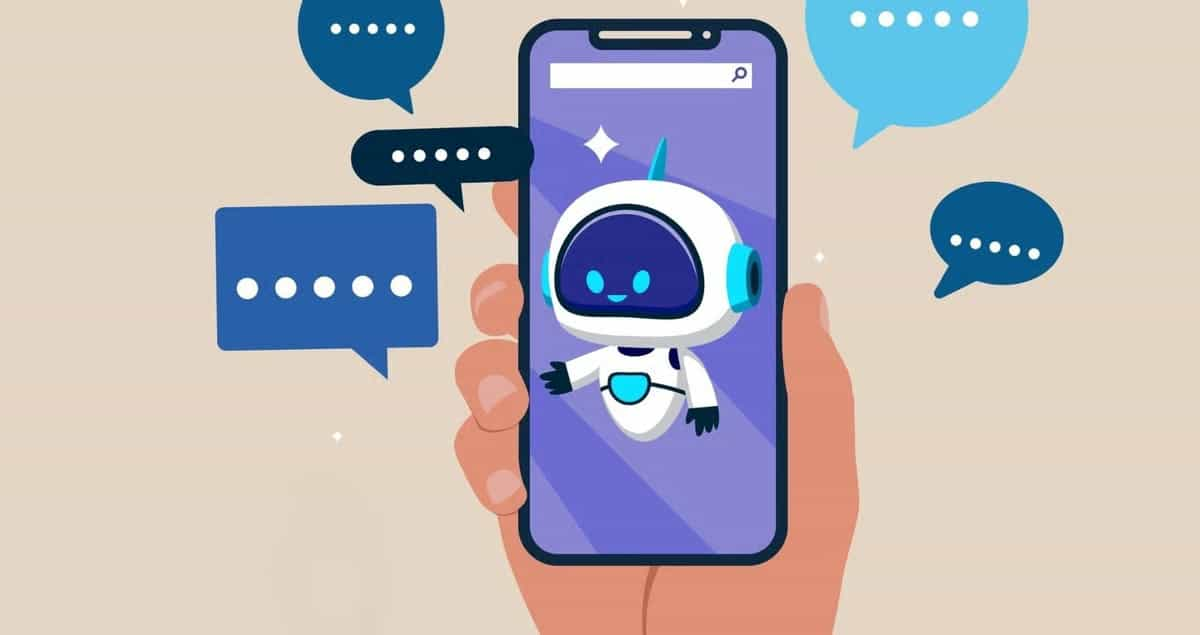The question echoes through boardrooms and management conferences in 2025: As autonomous AI agents become increasingly sophisticated, can they replace traditional managers? The answer, paradoxically, is both “substantially yes” for routine managerial functions and “definitively no” for genuine leadership. This nuance distinguishes organizations that harness AI effectively from those that make costly mistakes by misunderstanding what AI can and cannot do in human contexts.
The premise itself deserves scrutiny. AI assistants excel at what managers historically spent disproportionate time doing—data consolidation, performance tracking, scheduling optimization, and routine decision-making. A 2025 McKinsey report indicates that an AI agent in 2025 can converse with customers, plan actions, and complete complex multi-step tasks autonomously, representing dramatic advance beyond 2023-era bots that merely summarized information. Gartner projects that by 2026, 20% of organizations will leverage AI to eliminate more than half of their current middle management roles.
Yet simultaneously, organizations discovering that removing human managers without reimagining management functions creates predictable dysfunction. According to one research firm studying organizations that eliminated middle management layers, employee engagement declined, mentorship suffered, and retention worsened despite efficiency improvements. The picture is not “AI replaces managers” but rather “AI automates management functions while revealing which management capabilities truly require human presence.”
What AI Agents Actually Do: The Case for Partial Replacement
Modern AI agents perform three traditional management functions with notable effectiveness:
Information Broker Function: Historically, managers gathered performance data from multiple systems, synthesized it into comprehensible form, and communicated upward to executives while cascading decisions downward to teams. This information-brokerage role consumed approximately 30-40% of manager time.
AI agents now automate this entirely. Real-time dashboards consolidate data from CRM, ERP, project management, and analytics systems automatically. Instead of waiting for monthly reports, executives receive continuously updated intelligence on sales pipeline, operational efficiency, project status, and resource utilization. When performance deviates from expectations, AI flags anomalies within hours rather than weeks. This automation removes the information bottleneck that middle managers traditionally created.
Performance Monitoring Function: Tracking individual and team performance traditionally required manager observation, conversation, and judgment. Managers might notice someone’s productivity declining and discuss causes—personal circumstances, skill gaps, motivation issues, or workload misalignment.
AI accelerates performance monitoring dramatically. Systems track project completion velocity, task throughput, quality metrics, and engagement signals. When performance deviates, AI immediately identifies patterns—specific activities driving lower output, timing patterns showing productivity peaks and valleys, correlation between meetings attended and deliverables produced. This quantitative visibility is difficult for humans to replicate.
However, AI interpretation of performance metrics often misses crucial context. An employee sending fewer emails might be delegating more effectively rather than disengaging. An employee with inconsistent project completion might be navigating personal challenges or developing deeper expertise on complex problems rather than underperforming.
Process Optimization Function: Managers allocate resources—assigning team members to projects, scheduling meetings, distributing workload—based on available information and judgment. AI dramatically outperforms humans at this optimization.
Consider schedule optimization. An AI system analyzing hundreds of variables simultaneously—project deadlines, individual skill sets, current workload distribution, meeting requirements, focus time needs—can create optimal schedules humans cannot manually achieve. Motion AI and similar tools automatically generate project plans from text descriptions, assigning tasks based on available capacity and skill matching. Salesforce’s Agentforce distributes leads based on historical win rates and current capacity without manual routing.
Summary: For routine, data-intensive, repeatable management functions, AI agents deliver superior performance compared to human managers. They don’t fatigue, don’t play favorites, don’t miss patterns hidden in large datasets, and don’t delay decisions due to scheduling conflicts. On these dimensions, AI replacement is not aspirational—it’s already occurring.
What AI Cannot Do: The Case for Retained Human Management
Where AI agents encounter fundamental limitations is precisely where management creates greatest organizational value: the human dimensions of leadership.
Genuine Empathy and Emotional Intelligence
AI lacks empathy. It can simulate empathetic responses through language patterns, but simulation differs fundamentally from understanding. A manager recognizing that a team member’s productivity decline stems from personal difficulties can adjust expectations, offer support, and navigate nuance based on genuine human connection. An AI system identifying the productivity decline cannot connect authentically or understand context beyond programmed parameters.
This distinction matters profoundly. Research indicates that 80% of digital transformation success flows from emotional intelligence, with only 20% attributable to intellect. Organizations deploying AI transformation without addressing emotional dimensions—communicating changes with empathy, addressing fears transparently, supporting people through disruption—experience resistance, disengagement, and implementation failure.
An AI agent cannot conduct the conversation where a manager explains why automation is necessary while acknowledging job concerns, or how roles will evolve while supporting affected employees. It cannot demonstrate genuine care for people as humans rather than resources to optimize.
Contextual Judgment and Ethical Reasoning
Data-driven decisions fail when context matters. An AI system observing an employee working unusual hours might flag engagement risk (working late suggests disengagement or burnout). A manager aware the employee is launching a passion project with company support or learning new technology understands context the data conceals.
More critically, ethical decisions require moral reasoning beyond algorithm optimization. When decisions involve fairness, cultural nuance, ethical tradeoffs, or human dignity, AI lacks the grounding required. An algorithm optimizing for efficiency might recommend workforce reduction focused on lower output, missing that senior employees near retirement might choose early exit packages over layoffs, that high-potential junior employees might be underdeveloped relative to capacity, or that different roles carry different value despite similar output metrics.
Ethical leadership requires judgment about what should happen beyond calculation of what can happen. This remains distinctly human.
Genuine Motivation and Inspiration
Teams perform best when inspired by collective purpose and belief in leadership. This inspiration fundamentally requires human connection. An AI agent communicating strategy executes the information transfer. A human leader articulating strategy while connecting it to team purpose, personal development, and organizational vision creates meaning.
Research consistently shows that employees trust human leaders with empathy and authenticity far more than AI systems, regardless of AI’s technical superiority. This trust deficit creates adoption resistance that undermines even well-designed AI implementations.
Conflict Resolution and Negotiation
Interpersonal conflict inevitably emerges in teams—personality clashes, resource competition, misaligned incentives, or genuine disagreement about direction. Managing conflict requires understanding both sides’ underlying concerns, creativity in solution-finding, recognition of when compromise is needed versus when alignment is possible, and social skill in preserving relationships during disagreement.
AI systems can identify that conflict exists through communication pattern analysis or process delays. They cannot mediate conflict authentically or understand the nuanced emotional dynamics determining successful resolution.
Authentic Mentorship and Development
Great managers develop future leaders through mentorship, relationship investment, and guidance rooted in genuine caring about people’s growth. This mentorship cannot be automated. While AI can identify skill gaps and recommend training, it cannot provide the role modeling, encouragement through difficulty, and personal investment that distinguishes mentorship from skill assessment.
Organizations that eliminate middle managers without adequate alternative mentorship structures report innovation decline and mid-career talent leaving for organizations providing development opportunities.
The Hybrid Future: AI Augmentation, Not Replacement
The emerging reality across organizations successfully deploying AI in management contexts is hybrid leadership models: AI handles optimizable, routine, data-intensive functions while humans focus on the aspects creating genuine competitive advantage.
Manager Role Evolution:
Rather than disappearing, manager roles transform dramatically:
Orchestrators of Human-AI Collaboration: Managers become facilitators ensuring human and AI systems work effectively together. When AI identifies a performance issue, the manager investigates context, understands root causes, and develops responses considering human factors AI cannot capture.
Agents of Organizational Change: AI disrupts workflows, automates roles, and forces organizational adaptation. Managers guide people through this transformation—addressing fears honestly, explaining why change matters, supporting reskilling, and building culture embracing rather than resisting change.
Coaches for Emerging Skills: As AI automates routine tasks, human value shifts toward skills AI cannot replicate—creativity, emotional intelligence, complex problem-solving, adaptability. Managers become coaches helping teams develop these capabilities. Organizations investing in manager training on coaching and development report far better AI adoption outcomes than those expecting AI alone to drive change.
Empirical Evidence of Hybrid Model Success:
Organizations embracing hybrid models report superior outcomes compared to both “pure AI” and “pure human” approaches:
- Decision velocity improves through AI automation of routine decisions while humans make high-stakes choices
- Employee engagement improves when managers focus on development and human connection rather than administrative tasks
- Innovation increases because teams have manager coaching and mentorship fostering creativity
- Retention improves because employees feel genuinely supported by human managers rather than monitored by AI
The Real Risks of Premature Manager Replacement
Organizations attempting to replace managers purely with AI encounter predictable, costly failures:
Mentorship and Development Collapse: Without human managers investing in people development, institutional knowledge transfer slows, mid-career talent leaves for organizations providing growth, and succession planning fails.
Culture Erosion: Organizational culture is transmitted through human relationships and modeling. AI agents cannot sustain culture—they can report metrics about culture but cannot embody values, demonstrate expected behaviors, or foster belonging.
Disengagement and Resistance: Employees managed exclusively by AI systems report lower engagement, higher anxiety about job security, and greater resistance to change. They feel unseen as humans, reducing intrinsic motivation.
Ethical Failures: Without human judgment tempering algorithmic optimization, organizations make decisions that are technically efficient but ethically problematic—creating resentment, damaging reputation, and attracting regulatory scrutiny.
Surveillance Culture: AI performance monitoring systems without human empathy create environments where employees feel watched rather than supported, triggering defensive behaviors and undermining psychological safety.
Implementation Best Practices for AI-Augmented Management
Organizations successfully leveraging AI in management contexts follow consistent patterns:
Phase 1: Identify Optimizable Functions
Audit current management work. Which functions are routine, data-driven, repeatable, and rule-based? Invoice approval workflows, performance data consolidation, resource scheduling, routine task allocation—these are prime AI candidates. Which functions require judgment, empathy, creative thinking? Conflict resolution, mentorship, strategic decisions involving human impact—these require human retention.
Phase 2: Implement AI for Optimizable Functions
Deploy AI systems handling routine functions. Automate scheduling, performance monitoring, routine approvals, task assignment. This frees management capacity for higher-value work.
Phase 3: Reskill Managers for Augmented Roles
Train managers to orchestrate AI-human collaboration, coach for emerging skills, and lead change. This is not optional—managers lacking these capabilities become bottlenecks rather than value creators.
Phase 4: Maintain Human Oversight and Judgment
Design systems where AI makes recommendations that humans review rather than AI making autonomous decisions unilaterally. Humans retain judgment authority on consequential decisions.
Phase 5: Build Transparency and Trust
Communicate clearly about how AI works, why it’s being used, and how it affects people. Create feedback mechanisms enabling teams to raise concerns. Build trust through transparency rather than expecting acceptance of opaque AI systems.
The Verdict: Augmentation, Not Replacement
By 2026, 20% of organizations will reduce middle management by more than half through AI deployment. Yet this reduction reflects optimization of redundant management functions rather than elimination of management value.
The manager role is not becoming obsolete; it’s becoming more valuable but more demanding. Managers in 2025 need emotional intelligence, adaptability, coaching ability, change leadership, and ethical judgment—precisely the capabilities AI agents cannot replicate. The managers struggling most are those attempting to do what AI does better (data processing, routine optimization) rather than doing what humans do uniquely (developing people, leading change, making judgments involving nuance and context).
Organizations succeeding with AI will not replace managers with algorithms. They will liberate managers from administrative burden, empower them to focus on genuinely human work, and train them for hybrid leadership where AI executes routine tasks while humans drive meaning, growth, and ethical stewardship.
The future of management is not “AI or humans.” It’s “humans empowered by AI, doing what humans do best.” Organizations that understand this distinction will attract and retain better talent, foster stronger culture, and achieve superior performance compared to those pursuing pure automation. The competitive advantage flows not to organizations most eagerly automating management but to those most thoughtfully preserving what makes human leadership irreplaceable while AI handles what it does better.

